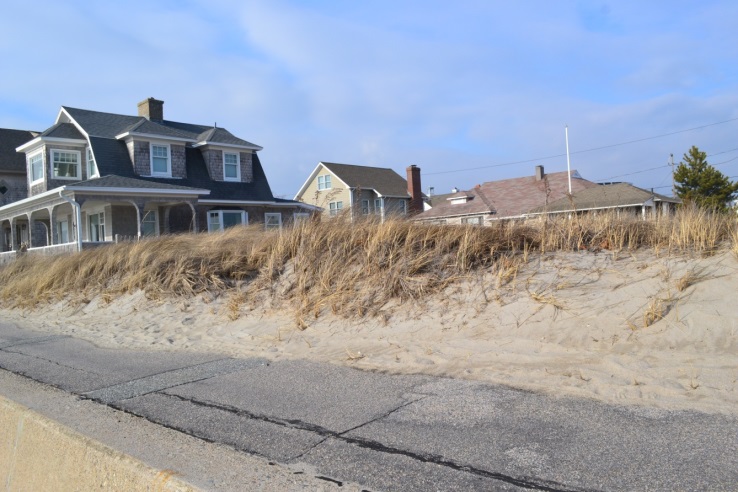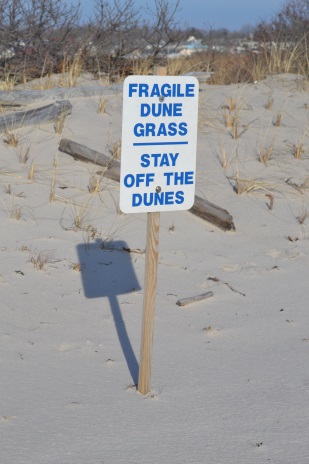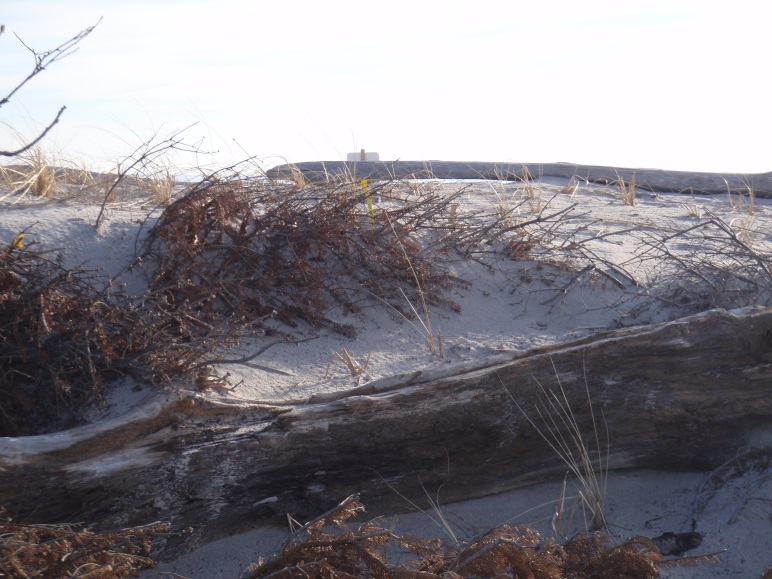Upland plantings stabilize bluffs and reduce rainwater
runoff. Eroding banks can also be protected from erosion by the creation of a
salt marsh. Through bank re-grading or application of fill material, the
intertidal zone can be planted with appropriate, salt-tolerant vegetation, thus
creating a fringe tidal marsh (Chesapeake Bay Foundation, 2007; Hardaway et al., 2009; VIMS-CCRM, 2006). Steep banks can sometimes be stabilized with “living
walls” which are engineered support structures planted with vegetation to
reduce erosion. Living wall structures reduce the need for extensive bank re-grading
(Duhring, 2008a).Although toe protection can be combined with slope grading,
terracing and slope grading are generally not effective shoreline protection
for sites exposed to significant wave-induced erosion.
Marsh Restoration or Creation
The creation or restoration of fringing marshes is the
most widely used non-structural approach to erosion control. Although it is
possible to create a marsh on most shorelines, marsh creation is not
recommended for sites where they are not a natural feature along comparable
natural shorelines (MD DOE, 2008). For narrow or eroding marshes, tidal marsh
maintenance and enhancement is appropriate. Sparse marsh can be enhanced with
plugs of marsh grass (Broome, Rogers, and Seneca, 1992). If necessary, fill
material can be deposited to provide a suitably gradual slope for marsh
creation or to enable a marsh to maintain its elevation with respect to the
water level (VIMS-CCRM, 2006). While shoreline stabilization using only plants
may be a viable solution on protected sites, along more exposed shorelines,
fringe marsh plantings will likely require temporary or permanent supplemental
structures, such as toe protection or sills, to ensure planting establishment.
Plugs or live stakes are planted landward of MLW with the expectation that they
will fill in within one to two growing seasons, providing the wave attenuation
and habitat services of natural marsh vegetation. The success of the restored
fringe marsh depends on width of the existing shoreline, the depth and composition
of the existing soil, the slope of the shoreline, the shoreline configuration,
exposure and orientation, and sun/shade conditions (MD DOE, 2008).
Beach
Nourishment
Natural beaches are in a constant state of flux, responding
to changes in wave energy and sea level (Lithgow et al., 2013). Post-storm
beaches can become too narrow and steep for recreational opportunities or
coastal protection. Storms can create steep scarps which could be dangerous for
beach goers. With sufficient time, appropriate wave climate and sufficient
supply of sand, beaches may restore themselves but few coastal communities can
risk the loss of recreational services or erosion control while waiting for
natural restoration to occur. Beach nourishment (also referred to as fill or
replenishment) “restores” the beach quickly by importing sand from a land or
offshore site. While nourishment may recover some of the ecosystem services
that are typically lost on a developed and armored beach, nourishment does not
“restore” a beach. Beaches nourished for optimum recreation or scenic views are
graded too flat and low to provide storm protection. Nourishment can also bury
native vegetation which can provide an opportunity for invasive species to
colonize. Nourished sediment may also
adversely affect nesting and foraging of shorebirds and other coastal animals
(Nordstrom, Lampe, and Vandemark, 2000).
It is not unusual for large
volumes of fill material to be transported away from the nourished site within
the first winter or after the first storm (Dias et al., 2003). Although
frequently identified as a “failure” by property owners, this is typically the
result of the beach transforming into a more natural profile and had been
accounted for during the design process (Committee on Beach Nourishment and
Protection, National Research Council, 1995). Therefore, periodic maintenance
of nourished beaches should be expected and included in the life-cycle costs of
the project.
Dune Creation and Restoration
Dune creation or restoration
may be a component of a beach nourishment effort or a stand-alone project.
Although it is more effective to maintain existing dunes, coastal development
and storm damage can render intervention necessary. The same process is used to
create a dune as is found in nature, but at a faster pace. Dune restoration
will be most successful if: it is located where the natural dune line
should be and if possible, tied into existing dunes; there is sufficient space
for the dune to form and move naturally; manmade damage is mitigated or prevented
and; nature is assisted not destroyed (Salmon,
Henningsen, and McAlpin, 1982).

Even on very small sites with less than ideal conditions,
beach grass can be used to create protective dunes. This dune was created by
planting beach grass on a 6 m wide property located above a 1 m high seawall, topped
by a paved sidewalk. The dune is now over 1 m high and the beach grass is
colonizing neighboring properties.
 Three approaches are used to create or restore dunes:
vegetate, provide additional sediment, or remove manmade structures that constrain
dune development (Lithgow et al.,
2013; Martinez, Hesp,
and Gallego-Fernandez, 2013). Sand fences,
planted vegetation, fertilization and water are all used to increase natural
dune processes (Salmon, Henningsen, and McAlpin, 1982). In areas where dunes do not form naturally, manmade dunes will not
be successful. Dunes that can not be maintained after wave or storm damage will
also be successful. In locations where dunes can form, dune creation and
restoration should be similar to local naturally formed dunes. For instance, in
low wave energy conditions dunes will have lower elevations than dunes in high
wave energy conditions. Along the Connecticut shoreline of Long Island Sound
coast, the lack of naturally available sediment available for transport and
dune growth will limit the ability of dunes to restore naturally from storm
damage.
Three approaches are used to create or restore dunes:
vegetate, provide additional sediment, or remove manmade structures that constrain
dune development (Lithgow et al.,
2013; Martinez, Hesp,
and Gallego-Fernandez, 2013). Sand fences,
planted vegetation, fertilization and water are all used to increase natural
dune processes (Salmon, Henningsen, and McAlpin, 1982). In areas where dunes do not form naturally, manmade dunes will not
be successful. Dunes that can not be maintained after wave or storm damage will
also be successful. In locations where dunes can form, dune creation and
restoration should be similar to local naturally formed dunes. For instance, in
low wave energy conditions dunes will have lower elevations than dunes in high
wave energy conditions. Along the Connecticut shoreline of Long Island Sound
coast, the lack of naturally available sediment available for transport and
dune growth will limit the ability of dunes to restore naturally from storm
damage.

If there is insufficient sediment available for dunes to form
naturally, clean sediment of similar composition to that which would occur
naturally must be brought to the site to create the dunes. After the dune is
formed, fencing and vegetation can be used as barriers to the wind, causing
windborne sediment to accumulate around the fence or plantings (O’Connell,
2008). Almost any type of fencing, snow fencing, plastic or fabric fencing, or
coniferous (e.g., “Christmas trees”)
or other brush, can be used to create dunes provided it does not completely
block the wind.


